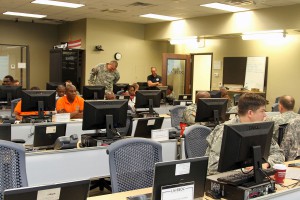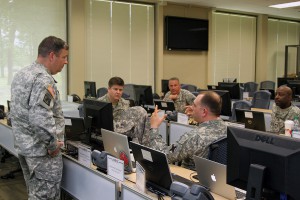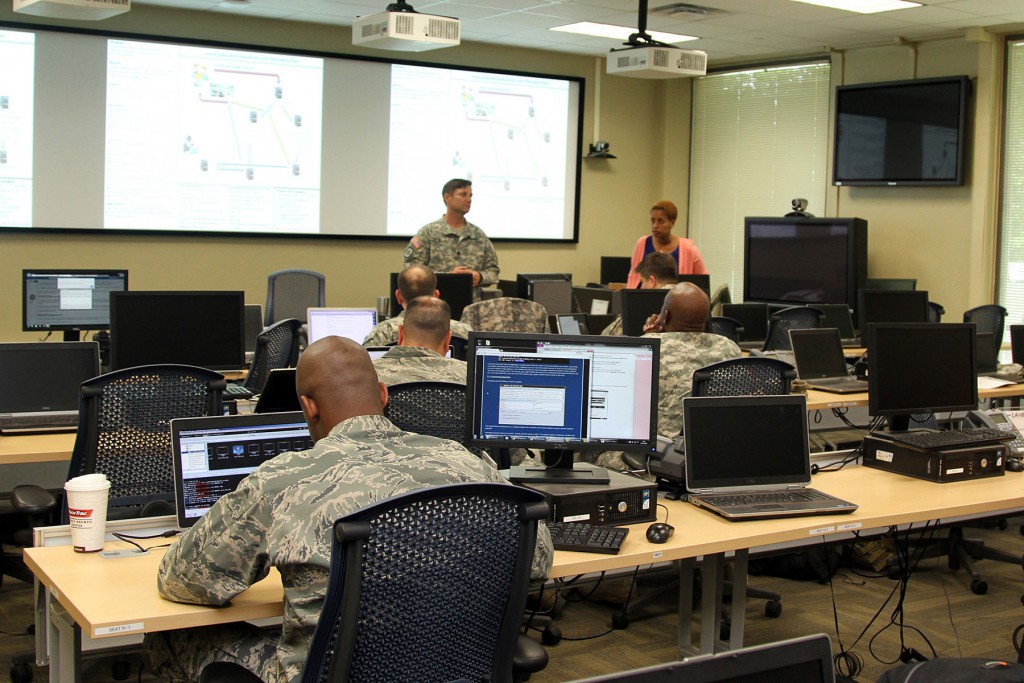By Spc. Tarell J. Bilbo, 241st Mobile Public Affairs Detachment
NEW ORLEANS – The Louisiana National Guard’s cyber protection teams, in partnership with state and federal government officials, came together at Louisiana State University’s Stephenson Disaster Management Institute in Baton Rouge, to participate in a Vigilant Guard exercise to rehearse and demonstrate the capabilities of maintaining cyber security, April 13.
The LANG’s Cyber Defense Incident Response Team (CDIRT) simulated a series of cyber-attacks defacing state and parish websites to test the response tactics of those organizations.
“Cyber communication is what we most use to convey our message about how prepared we are; it’s the way we convey our evacuation plans,” said Lt. Col. Henry T. Cappello, information operations and cyber planner for the Louisiana National Guard. “So just imagine if that communication was disrupted or false information was put out, what could happen during a disaster.”
The CDIRT utilizes the Stephenson Disaster Management Institute, created by LSU and the LANG, to train alongside other government entities such as the FBI, the Department of Homeland Security and the Louisiana State Analytical and Fusion Exchange.
“We work together harmoniously to make sure we are training and that we communicate properly so that we can be aware of what the threat is to Louisiana from a cyber perspective,” said Cappello. “From there, we prepare to respond and mitigate against those attacks.”
During a portion of the training, the team simulated a defacement of the Plaquemines Parish website to demonstrate the impact such an attack could have on the messages that were being put out to the community.
“This training is very effective. It gives us a plan on what to do in case anything of this nature happens,” said Michael Powell Jr., public information officer for the Plaquemines Parish government office. “This is a very helpful method for us to prepare for the upcoming hurricane season.”
The CDIRT uses national standard frameworks to implement cyber security into different organizations, in order to better service their customers and keep all parties coordinated.
-more-
“The framework basically works on five core functions: identify, protect, detect, respond and recover,” said Cappello. “That allows us to shorten the time of the incident and get the communities back on their feet as quick as possible.”
According to Cappello, the Guardsmen of the CDIRT meet to train once every quarter to keep their skills sharp and to share any new information that the members may come across.
“Training like this definitely opens up the line of communication between agencies,” remarked Powell. “We pretty much get the order of operations of who to contact if we encounter a similar situation.”
“The goal is about having the plan in place, rehearsing it and then if it happens, we’re not surprised and we’re ready,” Cappello said. “We’re not waiting until after an incident to get involved, we’re getting involved now.”
Vigilant Guard is a federally funded exercise that is supported by the National Guard Bureau and sponsored by the United States Northern Command (USNORTHCOM), whose mission is to provide homeland defense, civil support and security cooperation to defend and secure the United States and its interests.









